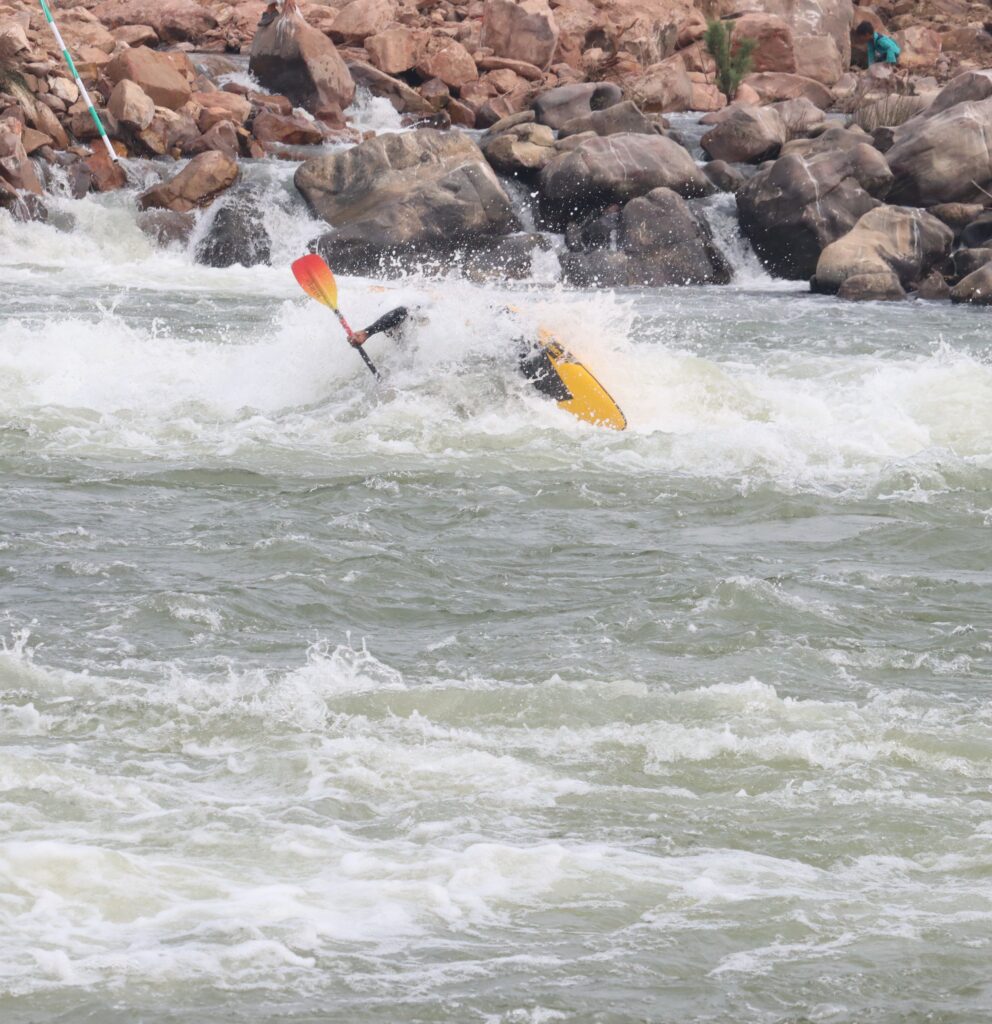White water kayaking often conjures images of adrenaline-fueled adventures through turbulent rapids, leading many to question its safety. While there are inherent risks involved, understanding the factors at play and adopting proper safety measures can mitigate these dangers. In this blog, we’ll explore the realities of white water kayaking and address common concerns regarding its safety.
One of the highlights of kayaking in Kerala is the opportunity to immerse oneself in the region’s rich biodiversity. As you paddle along the waterways, you’ll encounter a variety of bird species, including kingfishers, egrets, and herons, as well as glimpses of local life along the riverbanks.
Understanding the Risks in white water kayaking:
White water kayaking involves navigating through fast-moving water, rocky obstacles, and unpredictable currents, presenting inherent risks to paddlers. Capsizing, collisions with rocks or debris, and becoming trapped in hydraulic features are among the potential hazards faced on the river. However, with proper training, equipment, and risk assessment, these dangers can be minimized.
Training and Skill Development:
One of the most effective ways to mitigate the risks of white water kayaking is through comprehensive training and skill development. Novice paddlers should undergo formal instruction from qualified instructors, learning essential techniques such as edging, bracing, and reading river currents. Additionally, practicing in controlled environments and gradually progressing to more challenging rapids can build confidence and competence on the water.
Importance of Safety Gear in kayaking:
Equipping oneself with the appropriate safety gear is paramount in white water kayaking. Personal flotation devices (PFDs) provide buoyancy in the event of capsizing, while helmets protect against head injuries from impacts with rocks or obstacles. Additionally, spray skirts seal the kayak’s cockpit, preventing water from entering during rapid navigation. Properly fitted and maintained gear can significantly reduce the severity of accidents on the river.
Risk Assessment and Decision Making:
Effective risk assessment and decision making play a crucial role in safe white water kayaking. Paddlers should evaluate factors such as water level, flow rate, and weather conditions before embarking on a kayaking trip. Knowing one’s skill level and limitations, as well as recognizing when to exercise caution or avoid certain sections of the river, can help prevent accidents and ensure a positive paddling experience.
The Role of Experience:
Experience plays a significant role in white water kayaking safety. Seasoned paddlers develop a keen understanding of river dynamics, honing their ability to read water features and anticipate potential hazards. By logging hours on the river and continually refining their skills, experienced kayakers can navigate challenging rapids with confidence and precision.
Conclusion:
While white water kayaking carries inherent risks, with proper training, equipment, and risk assessment, these dangers can be effectively managed. By investing in comprehensive instruction, equipping oneself with the necessary safety gear, and exercising sound judgment on the water, paddlers can enjoy the thrill of white water kayaking while minimizing the likelihood of accidents. With a respect for the river and a commitment to safety, white water kayaking can be an exhilarating and rewarding outdoor pursuit for adventurers of all levels.

